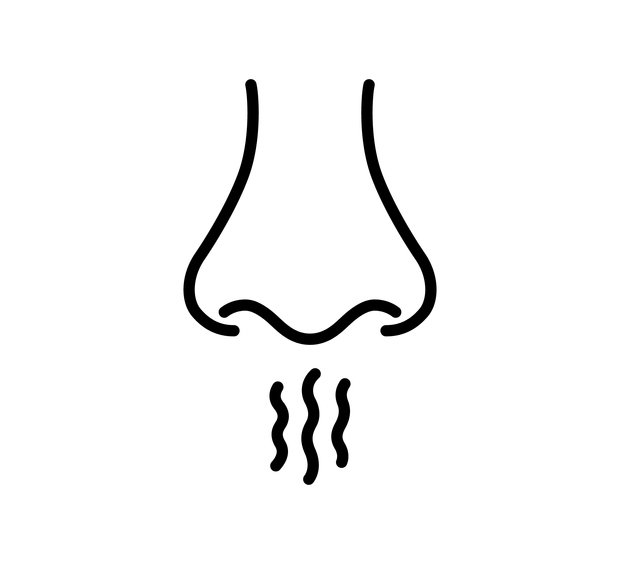Healthy Nose, Healthy Breathing
I talk a lot about proper facial development to ensure adequate breathing. This post covers the subject and links to most of my other posts about achieving proper craniofacial respiratory complex growth. I have mentioned things like allergies and sinus problems as factors affecting breathing but have never stressed how important it is to address them. This post will cover the main ENT-related problems associated with poor breathing, especially at night when sleeping.
The Nose and Our Airway
The nasal airway starts at the nostrils and extends to the nasopharynx. Although we often refer to the airway as a tube or pipe, it is actually made up of many structures that cause variations in airflow. Also, nasal obstruction and congestion are different; obstruction can be innate due to the nasal airway's anatomical properties or reversible due to mucosal swelling and engorgement from infections and allergies. In upper airway infections, nasal congestion can lead to difficulty sleeping. Relief of nasal obstruction can improve the quality of sleep.
Anatomical Nasal Airway Problems
The nose accounts for over 50% of the total upper airway resistance. Many abnormalities in the nose and pharynx can cause or worsen snoring and sleep apnea. These include septal deviation, nasal polyps, turbinate hypertrophy, rhinitis, adenoid hypertrophy, nasopharyngitis, and nasopharyngeal tumors that can narrow the airways in the nasopharyngeal region. 1
The narrowest part of the airway is the internal nasal valve which is just inside the nostrils and is the primary obstruction to nasal airflow. 2 The internal wall of the internal nasal valve is the nasal septum, which frequently deviates to one side, making it more difficult to breathe. The scroll-like bones in the back of the nose on the lateral sides are called turbinate bones. Over 1900 patients were examined, and the researchers found 67% of the subjects had nasal valve collapse, a condition where the valve is too narrow, which impedes airflow. Additionally, 76% had a deviated septum which also can prevent proper airflow. Finally, 72% had enlarged inferior turbinate bones, which also make it harder to breathe. 3
Poiseuille's Law and Air Flow
Poiseuille's law is the way scientists determine flow through a tube. The viscosity of the gas, or fluid, and the length of the tube are factors, but so is the width of the tube. In the case of Poiseuille's law, the radius is used to represent the width. 4 In the law, the radius is raised to the fourth power, meaning the flow is sixteen times less when the tube is halved. So we can see why only small changes can dramatically affect our ability to breathe, especially when we sleep.
Nasal Ventilatory Reflex
An experimental application of local anesthetics in the nasal mucosa of healthy patients resulted in a significant increase in obstructive and central apnea episodes, similar in magnitude to those observed with complete nasal obstruction, indicating the involvement of the nasal ventilatory reflex in airway maintenance. Mouth breathing can trigger respiratory events in people with subclinical apnea or exacerbate apnea episodes by reducing the activation of nasal receptors and spontaneous ventilation.
Nitric Oxide and the Nose
Lastly, nitric oxide helps keep upper airways open by transmitting signals between the nose, pharyngeal muscles, and lungs. Nitric oxide is produced in the nose and paranasal sinuses in significant quantities. It has been clinically proven to be a potent pulmonary vasodilator that improves oxygenation and ventilation. Since the total amount of inspired nitric oxide varies with nasal flow, a decrease in nasal breathing would result in a reduction of nitric oxide delivery to the lungs and a resultant reduction in blood oxygenation. Nitric oxide also plays a role in maintaining muscle tone, regulating neuromuscular pathways in pharyngeal muscles, and regulating sleep. 1
Conclusion
Sleep apnea is a silent disease that causes numerous health problems, from hypertension to anxiety. As a dentist, I assess the craniofacial respiratory complex as it relates to proper breathing. After looking at their jaw development and function, I suspect breathing issues in an alarming percentage of my patients and refer them to sleep specialists for evaluation. However, my ability to examine the nose is limited. Considering that 50% of cases are due to issues arising from the nose, ENT consultation should be the standard of care when apnea or airway resistance is suspected. Luckily the sleep group I refer to routinely recommends ENT consultation for patients diagnosed with sleep apnea. If you routinely feel you can’t breathe properly through your nose, especially at night when sleeping, you should consider having a doctor look at your nose; your health depends on it.





